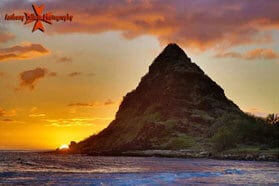Stand Up Paddle
See: Travel Photography - Punchbowl National Cemetery - Nisei Soldier Congressional Medal - Iwo Jima Memorial - Oahu Landmarks - King Kamehameha - Diamond Head - Manoa Falls - Lyon Arboretum - Kualoa Sugar Mill - Chinamans Hat Island - Hanauma Bay - Lanai Lookout - Oahu Cliff Jumpers - Kakaako Graffiti Art - Hokulea - Aloha Tower - Oahu Lighthouses
Stand-up paddle surfing, also known as stand-up paddle boarding (SUP), is an exciting and rapidly growing sport with deep roots in Hawaiian culture. This modern form of surfing has gained popularity for surfers to explore and cover longer distances on the water. Stand-up paddle boarding has expanded from traditional surf beaches to various types of watercourses worldwide in just a short period.
Stand-up paddle boarding competitions and races are now held on the open ocean and lakes, rivers, and canals. Paddlers can be seen navigating challenging river rapids or riding standing waves, showcasing the versatility of this sport. Another aspect of stand-up paddle boarding is gliding, where enthusiasts embark on long-distance journeys along coastal regions, often utilizing tailwinds to enhance their experience.
It is worth noting that stand-up paddle boarding has its roots in a traditional sport called paddleboarding, where participants would kneel on a board and paddle using their hands, resembling a butterfly swimming stroke. However, using a paddle has become more prevalent, and the term "paddleboarding" is now sometimes mistakenly used to refer to stand-up paddleboarding.
Stand-up paddlers employ a wide range of attire, including wetsuits and other clothing, depending on the water and air temperature. They must dress appropriately to ensure comfort and safety during their paddleboarding adventures as they spend most of their time standing on the board. Whether you're a seasoned enthusiast or new to the sport, stand-up paddle boarding offers an exhilarating way to connect with nature and explore the world's waterways.







